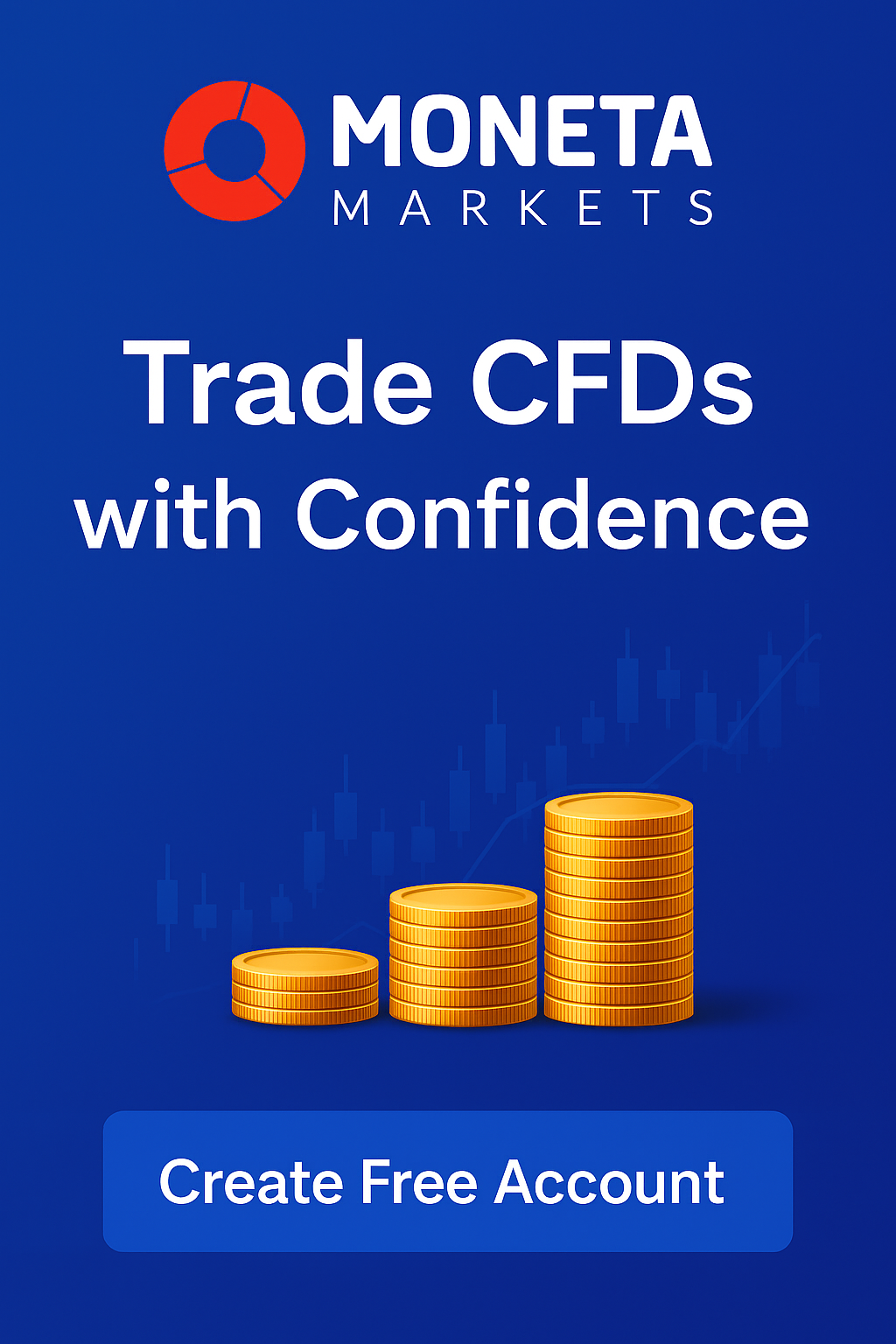What is CFD Trading? A Beginner’s Guide to Contracts for Difference
Just got your paycheck and feeling the urge to invest, especially after seeing those U.S. stock fluctuations? Maybe you’re wondering how to get started and which stocks to pick. This article is for you if you’re confused about how to navigate the world of trading and are looking for a straightforward explanation.
This guide will demystify CFD trading. We’ll cover the basics, explain how it works, discuss its potential benefits, and most importantly, highlight the risks so you can make informed decisions.
Understanding the Basics: What Exactly is CFD Trading?
CFD trading, or Contract for Difference trading, is essentially betting on whether you think the price of an asset will go up or down. You don’t actually own the asset, such as a stock or commodity; instead, you enter into a “contract” with a broker to exchange the difference in price between when you open and close the trade.

The Core Concept: Speculating on Price Movements
With CFD trading, you’re speculating on the future price of an asset. This could be anything from gold to U.S. stocks to even cryptocurrencies. Instead of buying the actual asset, you’re trading a contract based on its price movement.
Think of it like betting on the outcome of a race. You don’t own the horse, but you win if your horse wins.
The ‘Contract’ in Contract for Difference
The “contract” in CFD trading is an agreement between you and the broker. This agreement stipulates that you will exchange the difference in the asset’s price from the time you open the trade to the time you close it. If you predict correctly, you profit; if not, you lose.
It’s like making a deal. You agree to pay or receive based on how the asset’s price changes.
Key Differences from Traditional Asset Ownership
Unlike traditional stock investing, you don’t own the underlying asset in CFD trading. This means you don’t receive dividends or have voting rights. You’re purely speculating on the price movement.
A common beginner mistake is thinking you own the asset when you’re actually just trading a contract based on its price. Consider this: you don’t own the company when engaging in CFD trading of stocks.
How Does CFD Trading Work? The Mechanics Explained
CFD trading involves a few key steps: choosing an asset, opening a position (buying or selling), monitoring the price, and closing the position. The profit or loss depends on the difference between the opening and closing prices.

Opening a Position: Going ‘Long’ or ‘Short’
When you open a CFD position, you’re essentially making a bet on the asset’s price direction. If you believe the price will rise, you “go long” (buy). If you believe it will fall, you “go short” (sell).
Going “long” is like saying, “I think the price will go up.” Going “short” is like saying, “I think the price will go down.”
Understanding Leverage and Margin: Magnifying Potential Outcomes
Leverage allows you to control a large position with a relatively small amount of capital. Margin is the initial deposit you need to open a leveraged position. While leverage can magnify profits, it can also magnify losses.
Imagine using a small amount of money to control a much larger investment. This is leverage. However, remember that both gains and losses are amplified.
Calculating Profit and Loss in a CFD Trade
Your profit or loss in a CFD trade is determined by the difference between the opening and closing prices, multiplied by the number of contracts you hold. This amount is further adjusted by any fees or commissions charged by the broker.
For example, if you buy a CFD at $10 and sell it at $12, your profit is $2 per contract, minus any fees.
Potential Advantages of Trading CFDs
CFD trading offers access to diverse markets, flexibility to profit from both rising and falling prices, and capital efficiency through leverage. These advantages can be particularly attractive to active traders.

Access to Diverse Global Markets
CFD trading allows you to access a wide range of global markets, including stocks, indices, commodities, and currencies. You can trade these markets without physically owning the underlying assets.
This means you can potentially profit from the price movements of gold, U.S. tech stocks, or even the Japanese Yen, all from a single trading platform.
Flexibility to Profit from Rising and Falling Prices
CFDs offer the flexibility to profit from both rising (going long) and falling (going short) markets. This allows you to potentially profit regardless of the overall market direction.
If you believe a stock’s price will decline, you can “short” it, profiting if your prediction is correct. This is particularly useful during economic downturns.
Capital Efficiency through Leverage
Leverage allows you to control a larger position with a smaller amount of capital. This means you can potentially generate larger profits with a smaller initial investment. However, it also magnifies your potential losses.
For instance, with 10:1 leverage, you can control a $10,000 position with only $1,000 of your own capital. Remember, while this increases profit potential, it also increases the risk of significant losses.
The Significant Risks and Considerations of CFD Trading
CFD trading is considered a high-risk activity, primarily due to leverage, which can amplify both profits and losses. Understanding these risks is crucial before engaging in CFD trading.

The Double-Edged Sword of Leverage: Amplified Losses
Leverage can significantly amplify your losses if the market moves against your position. It’s essential to understand how leverage works and to use it cautiously. Always consider the potential for substantial losses.
Imagine using leverage to bet on a stock that unexpectedly drops. Your losses could quickly exceed your initial investment, potentially leading to significant financial hardship.
Volatility, Market Gaps, and Stop-Out Levels
CFD markets can be volatile, and unexpected events can cause significant price swings or “gaps.” These gaps can trigger stop-out levels, automatically closing your position and resulting in a loss. A stop-out level is a price point at which the broker automatically closes your position to prevent your losses from exceeding your account balance.
For example, a sudden news announcement could cause a stock’s price to plummet, triggering your stop-out level and resulting in an immediate loss.
Understanding Overnight Fees and Spreads
CFD brokers typically charge overnight fees for holding positions open overnight. These fees can erode your profits over time. The “spread” is the difference between the buying and selling price, and it represents the broker’s commission.
Imagine paying a small fee every night you hold a CFD position. These fees can add up, especially if you’re holding the position for an extended period.
CFD Trading Around the World: Regulation and Availability
CFD trading is regulated differently across the globe, with some countries restricting or prohibiting it altogether. It’s crucial to trade with regulated brokers to ensure your funds are protected.
Why CFDs Are Banned in Some Countries (e.g., US)
Some countries, like the United States, have banned or heavily restricted CFD trading due to concerns about investor protection and the high-risk nature of the product. Regulators are worried about the potential for significant losses, especially among inexperienced traders.
These regulatory measures are often put in place to safeguard individuals from potentially harmful financial products and practices.
The Importance of Trading with Regulated Brokers
Trading with a regulated broker provides a level of protection for your funds and ensures that the broker adheres to certain standards of conduct. Regulated brokers are typically required to segregate client funds and provide transparency in their operations.
Look for brokers regulated by reputable financial authorities like the Financial Conduct Authority (FCA) in the UK or the Australian Securities and Investments Commission (ASIC) in Australia.
Regional Variations in CFD Trading Rules
CFD trading rules and regulations vary significantly from region to region. Some countries may have stricter leverage limits or require brokers to provide more detailed risk disclosures.
Always research the specific regulations in your jurisdiction before engaging in CFD trading.
Is CFD Trading Right For You? Getting Started Responsibly
Before diving into CFD trading, carefully assess your risk tolerance, financial goals, and understanding of the product. Start with education and practice with a demo account.
Assessing Your Risk Tolerance and Financial Goals
CFD trading is not suitable for everyone. Consider your risk tolerance – how much money are you comfortable potentially losing? Also, think about your financial goals. Are you looking for short-term gains or long-term investments?
If you’re risk-averse or have long-term investment goals, CFD trading may not be the best fit for you.
The Value of Education and Demo Accounts
Before risking real money, take the time to educate yourself about CFD trading and practice with a demo account. Demo accounts allow you to trade with virtual money, giving you a risk-free environment to learn the ropes.
Think of a demo account as a training ground. It’s a safe space to make mistakes and learn from them without losing real capital.
Key Steps Before Placing Your First CFD Trade
Before placing your first CFD trade, ensure you understand the risks involved, have a clear trading strategy, and are using appropriate risk management techniques. Only trade with capital you can afford to lose, and never invest more than you’re comfortable with.
Develop a solid trading plan, set stop-loss orders to limit potential losses, and diversify your investments to spread your risk.
CFD trading offers a way to speculate on price movements without owning assets. However, remember it’s high-risk, especially for beginners. Start slow, educate yourself, and manage your risk carefully. Consider alternatives if you’re risk-averse.
Ready to deepen your financial knowledge? Explore our extensive library of trading guides, or test your strategies risk-free with a demo account before you commit real capital.


No responses yet